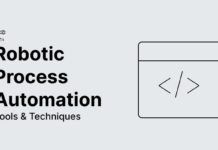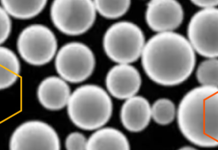In today’s fast-paced world, the manufacturing industry is evolving rapidly. As consumer demands shift, customers are more informed of their purchasing decisions and want to ensure their products match specified requirements exactly. In manufacturing, many unique influences shape the trends and changes that can be seen. Although technology is undeniably one factor, trends including the ability to create customized machinery, integrate automation, develop in-house production processes, and lead times on products are all considerations as well. The below five trends are the most influential in manufacturing today and are changing the industry.
Trend #1: Ability to Develop Custom Machinery
The ability for customers to work with businesses that will create customized machinery – specifically to their requirements – is a powerful driving force for a customer’s decision to work with a company. The option of customized machinery is an indicator of the direction manufacturing may take in the future, specialized and unique. These machinery should also have in-built roll-over protection structure to ensure safety of the operator. The use of customizable machinery has grown in the last decade because businesses are seeking dedicated equipment for more efficient processes to increase productivity and profitability. Where one manufacturer may produce a part utilizing multiple machines to complete secondary processes, another manufacturer may have custom equipment designed to complete product of the same part in fewer steps, on a single machine or line.
Today, customizations play a substantial role in manufacturing because each business has its own production process. Businesses manufacturing specialty products can stay more competitive in the market when they have their own custom equipment for their unique process. Customized machinery allows companies to create equipment that performs exactly suited to product requirements. In an industry where requirements may change, custom machinery provides the flexibility that manufacturers need when producing parts or products for multiple customers. It is important for companies to adjust to market demands, and as processes evolve, it is essential to the longevity of a company to adapt to new requirements.
Trend #2: The Integration of Automation
The use of automation in manufacturing equipment and processes is already prominent within the industry. Whether equipment is fully or partially automated, the processes are automated, or robotics are integrated within the system, the role of automation is changing manufacturing. With the support of automation and robotics, a manufacturing business that once worked a typical “9:00 to 5:00” workday can potentially extend their production to run 24 hours per day. In a shop, setting automation can increase the efficiency of production because one operator can monitor the workings of multiple machines. Companies with the available capital to automate their production processes can increase their production rates and, in turn, increase their profits.
The recent increase in robotic integration is influencing manufacturing in a variety of ways, one of which is a focus on improving safety. For certain hazardous conditions that require personal interaction with dangerous machinery, chemicals, or situations, robotics can be used rather than humans who would be put at risk for health or bodily injury. The integration of robotics can also play a role in preventing future costly repairs. Automated systems can recognize and pinpoint issues when they arise, stopping production before damage occurs.
Trend #3: Utilizing In-House Processing to Maximize Efficiency
Recently, more manufacturing businesses have turned to producing parts in-house. This proves to be more profitable and productive for companies creating repetitive products. With a focus on in-house production, manufacturers can control more of their processes by not relying on secondary sources for crucial parts. Removing manufacturing from outsourced operations means more labor for a company’s current workforce. However, as mentioned previously, utilizing automation with custom machinery allows businesses to manufacture at faster, more consistent rates than with standard machines.
Rather than relying on outsourcing, manufacturers are becoming self-sufficient for more of their production. Issues that can arise with outsourcing include miscommunications related to deadlines, color schemes, materials, and quality expectations. When creating the parts, in-house companies can tailor the final product to their exact specifications. As businesses begin to realize the benefits of in-house processes rather than outsourcing, more companies will follow suit to stay competitive and keep up with the market’s demand. Companies prefer buying used packaging and processing equipment in order to increase profitability. Check cwr resources inc to buy used industrial packaging and processing equipment.
Trend #4: Long Lead Times Lead to Frustrated Customers
Related to the need for in-house processing, a recently occurring trend is long-lead times from vendors and missed deadlines. Long lead times are causing businesses to make parts in-house and adjust their production processes so they can have more control over the complete operation. Companies can gain necessary control of their processes and deadlines by bringing manufacturing in-house. Customers need their products quickly, and overworked vendors with long lead times and missed deadlines can cause tensions between the manufacturer and customer. Faster delivery with higher quality products is an essential factor that gives businesses a competitive edge. The demand for custom, quick products are changing the way manufacturers operate today. With integration options such as customized equipment and automation, businesses are creating processes that are more cost-effective, competitive, productive, and efficient.
Trend #5: Technological Advancements
Technology has evolved over time and is now rapidly transforming the manufacturing industry. As automation and robotics become commonplace in manufacturing, customized machine solutions offer businesses the opportunity to integrate new technologies into their process. Many accessories and auxiliary options available to manufacturers are technology-focused. Customizable equipment allows customers to pick and choose which additional options they want to be included with their equipment. Although not all machine shops are interested in investing in new technologies, it can add numerous benefits to production processes.
Options for technological integration can include data acquisition systems that automatically collect, store, and organize data. This can tell operators how the machine is functioning if there were any issues during production, what optimal speed was when running, how many parts were produced, and much more information. Technology can also make it easier to operate machinery, and certain touch screen operating systems allow for a more visual understanding of how a machine is running. Technology can make machines safer for operators, replacing manual adjustment with electronic adjustments that are controlled using modernized operating systems.
Author Bio
For more than 70 years, MULTIPRESS has been trusted as the premier provider of hydraulic press solutions. Whether you are interested in a standard machine, or completely customized hydraulic machinery, MULTIPRESS’ experts take the time to select the right machine to fit your specifications and fulfill your production requirements. Our team of experienced mechanical, electrical, and software engineers is ready to create any customization you may need to suit your application.








